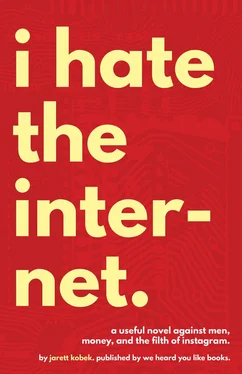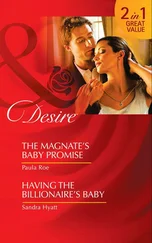Adeline was kind of famous and had enacted the social faux pas of being a woman who expressed unpopular opinions in a society that hated women. She’d committed the only unforgivable sin of the Twenty-First Century.
So there Adeline was on YouTube.
Now she was making money for Google.
Kevin Killian's Student had not uploaded the video with bad intentions. The uploader was thrilled to meet someone responsible for a beloved childhood classic. He’d read Trill in the Scholastic omnibus.
Adeline spoke with such candor and wit. It was nice, wrote the uploader, to see someone with an opinion.
The uploader had emailed the video to websites that reported on the comics industry. These included Newsarama and Comic Book News and Bleeding Cool.
These sites tended to run breathless articles about Marvel’s latest exploitation of Jack Kirby’s intellectual properties. With the exception of Bleeding Cool, these sites did not run many articles about Jack Kirby being royally screwed.
There were two reasons for this: (1) The necessity of maintaining a dialogue with Marvel. (2) The complete disinterest of comics fans in hearing about the way that Jack Kirby got screwed.
Bleeding Cool ran an article with the title: “ Trill artist M. Abrahamovic Petrovitch in Epic Rant!” The video was embedded in the article. The accompanying text was positive.
Most readers of Bleeding Cool responded well to the display of wit and candor. Truth be told, most readers of Bleeding Cool liked Adeline’s general weirdness.
Several negative responses appeared in the forums, employing the following words: ditzy, flighty, silly, goofy, whimsical, crazy, scattered, self-important.
Only a handful of people called her a stupid bitch.
Readers of Bleeding Cool shared the video. They sent emails. They posted links to Facebook and Twitter.
A few submitted the video to reddit. Most comments were favorable. Instant karma. One of the submissions was upvoted to the front page.
The video moved beyond the confines of comic book fans.
Somewhere in her monologue, Adeline had suggested that she couldn’t understand why any woman would work in technology.
“These deluded young gals,” she said, “who think that these companies will deliver them any single thing but grief need to see psychologists and explore the roots of their messy masochism. Probably something about Daddy, the poor darlings. These companies are the devil. Satan with a capital S. They’re anti-women and they emerge from that dreadful masculine trait of engineering. I’m old enough to know what engineering means. It means weapons for the military. All technologies end up in the hands of warmongers. I suppose if these girls want to kill other people with their labor, they can, but we should be mature enough to admit when we’ve allied ourselves with evil. These girls ain’t on the side of the angels. Many women have worked for the devil. It’s a tradition, darlings. How else does one explain that ghastly thing known as Sarah Palin? All these crazy young ones are lining up to burn in their very own Shirtwaist Factories, screaming that they’re empowered by the very technology that’s set them aflame. Remember, the master’s tools will never dismantle the master’s house.”
The Triangle Shirtwaist Factory fire was one of the great disasters in American life. It happened in 1911 on Washington Square in New York City. It happened in a building that is now part of New York University’s campus.
Back in New York, whenever Baby and Adeline had walked past the building in question, Adeline asked odd questions like, “Baby, when you’re attending classes in that building, do you ever feel as if a shade will reach out from the netherworld and clutch you in its grasp? If a shade does clutch you in its grasp, do you worry that its spirit will inhabit your body? If it does inhabit your body, what do you imaginate that you’ll think and feel? Will you want to work as a slave laborer? Will you gag on ectoplasmic smoke?”
“Adeline,” said Baby, “I have no idea what you’re talking about.”
“That’s simply delightful,” said Adeline. “Neither do I.”
There was a great worry amongst the owners of the Triangle company about their employees. They were worried that their employees would steal the same garments which they sewed for slave wages.
Each day, all of the exits were locked, allowing managers to check for pilfered goods before the employees left the building.
The system worked until it didn’t. One day the building caught fire. The women and men couldn’t escape. 146 people died.
Burning, smoke inhalation, jumping out of windows and splattering on the pavement. They were immigrants and they were poor and they were illiterate and they had no other opportunities for employment and they had no vested interest in the fruit of their labors and now they were dead.
Two of the deceased, a pair of teenaged brothers named Sam and Max Lehrer, had lived at 143 Essex Street. This was two doors away from 147 Essex Street.
147 Essex Street was where, six years later, Jack Kirby was born as Jacob Kurtzberg.
Adeline had offended some of the women in tech.
Because these women worked in tech, they were avid users of Twitter.
Twitter was a system by which people broadcast short messages to computers and cellphones. Each of these messages was called a tweet .
The vast majority of tweets were written by narcissists interested in letting other people know the wide range of their opinions on every possible subject.
These subjects included: celebrities, the dinners that the narcissists were eating, politicians of the opposing party, celebrities, the names of people who were dumb assholes, the habits of Black people (pro and con), celebrities, the breakfasts that the narcissists were eating, celebrities, politicians, sports, the number of Asian-Americans on any given night in any given dance club in Los Angeles, corporations to which the narcissists held an allegiance as customers, fast food brands, celebrities, sports celebrities, celebrities, celebrities, celebrities, celebrities, celebrities, complex social and political trends, and the lunches that the narcissists were eating.
All of the other tweets were written in the service of corporations and non-profits which had adopted Twitter as a method of public relations.
On an average day, you might see: (1) Your sister tweeting about her salad. (2) Your boyfriend tweeting about Kobe Bryant. (3) The Los Angeles Public Library tweeting about different images of Hollywood through the decades.
Kobe Bryant was a basketball player with eumelanin in the basale stratum of his epidermis. He was paid tens of millions of dollars to create the illusion of meaning while throwing round rubber balls around rectangular spaces.
Whenever he threw round rubber balls around a rectangular space, Kobe Bryant wore shirts that bore the name of the organization that paid him: the Los Angeles Lakers. These shirts also bore his last name, Bryant, and a number assigned to him by the organization.
The ostensible purpose of these shirts was to differentiate players from each other on the rectangular court.
The actual purpose of these shirts was to create objects imbued with an illusion of meaning that could be replicated on a mass scale.
People who believed in the illusion would buy replicas of Kobe Bryant’s shirt. The prices of these shirts started at $34.95. Some shirts cost well over $100.
The formalized systems in which grown men threw around balls were called sports. Sports were big money for the men who threw around balls, and even bigger money for the men who paid other men to throw around balls.
Читать дальше












